If I remember well that kind of geometry is anti anti-dive.
Different aero management/interaction that is for sure, AFAIK and based on many analyses made by You and some other guys on www.newsf1.it
If I remember well that kind of geometry is anti anti-dive.
As far as I know, over 100% anti dive leads to jacking, ie hopping under braking. It's more than badFDD wrote: ↑14 Feb 2025, 16:02
If I remember well that kind of geometry is anti anti-dive.
Different aero management/interaction that is for sure, AFAIK and based on many analyses made by You and some other guys on www.newsf1.it
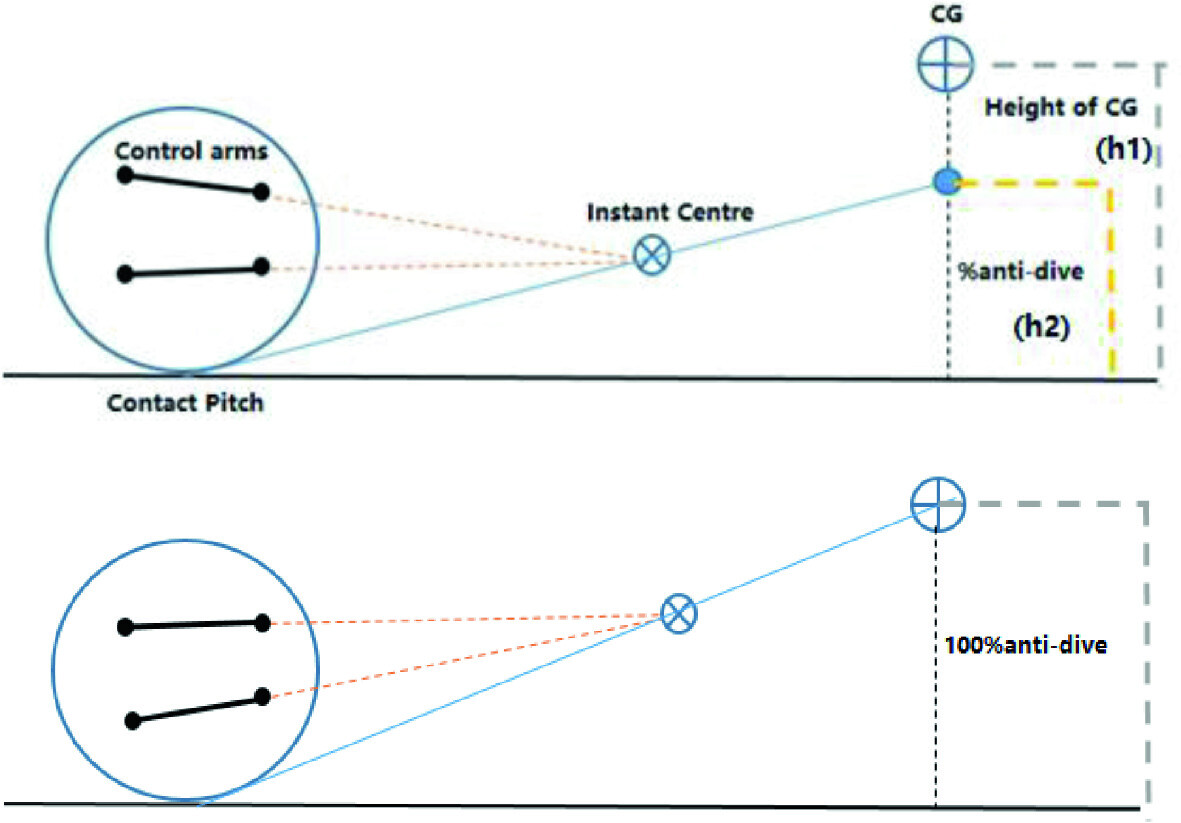
And you are right. The percentage degree of anti-dive of the car does not depend on how low the attachment point of the rear leg of the upper wishbone is, as many journalists keep telling or "experts". One part of a wishbone does not work in Isolation andVanja #66 wrote: ↑14 Feb 2025, 19:47As far as I know, over 100% anti dive leads to jacking, ie hopping under braking. It's more than badFDD wrote: ↑14 Feb 2025, 16:02
If I remember well that kind of geometry is anti anti-dive.
Different aero management/interaction that is for sure, AFAIK and based on many analyses made by You and some other guys on www.newsf1.it
However, this would be a very different geometry, as you can see on this illustration, not really what McLaren is doing I think
https://livetodai.com/uploads/default/o ... 1e6d0.jpeg
This would be a thing Marshal and Prodormu got from Newey, but didn't Newey do it at McLaren while there too? HmmmAndi76 wrote: ↑15 Feb 2025, 05:36One thing McLaren could do here (but not with the rear leg of the upper WB in isolation!) would indeed be 100% anti-dive or more in static conditions. It is possible that they have developed a suspension that with the downforce generated by the aerodynamics, the geometry is then shifted to a new position where the anti-dive percentages drops below 100%, so they still have the maximum desired anti-geometry when it moves. Wouldn't be the first time and not unusual. But again - not with or because of the rear leg of the upper WB in isolation.
The circle is completeVanja #66 wrote: ↑15 Feb 2025, 12:06This would be a thing Marshal and Prodormu got from Newey, but didn't Newey do it at McLaren while there too? HmmmAndi76 wrote: ↑15 Feb 2025, 05:36One thing McLaren could do here (but not with the rear leg of the upper WB in isolation!) would indeed be 100% anti-dive or more in static conditions. It is possible that they have developed a suspension that with the downforce generated by the aerodynamics, the geometry is then shifted to a new position where the anti-dive percentages drops below 100%, so they still have the maximum desired anti-geometry when it moves. Wouldn't be the first time and not unusual. But again - not with or because of the rear leg of the upper WB in isolation.



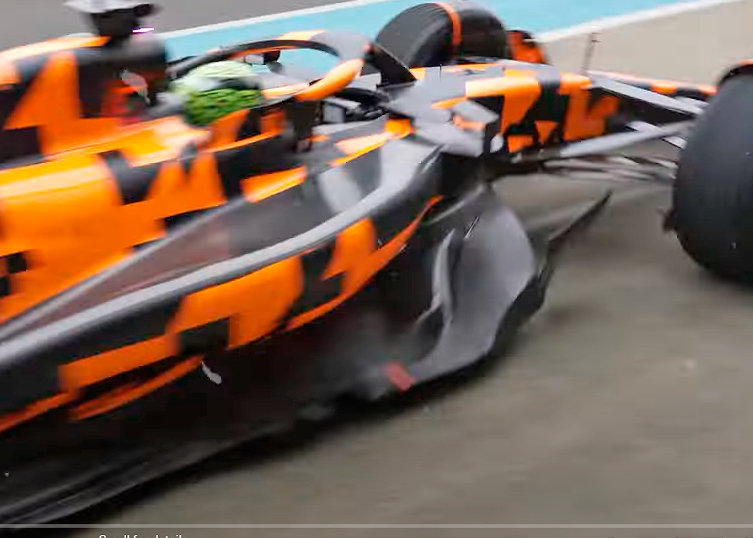
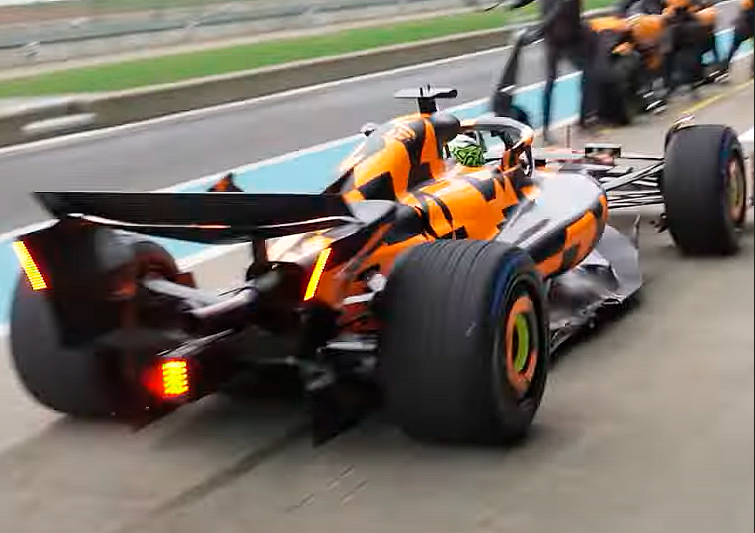
Emag wrote: ↑15 Feb 2025, 18:04Edit: Note how much "opened-up" the space between the suspension arms is compared to last year.
https://i.imgur.com/wdytvyR.png
I also spotted this cooling "slit" similar to what the SF24 was using too.
Ferrari for reference :
https://i.imgur.com/FCI5fHc.png
Yep, it's from the video F1 posted on their channel (around min 2:50 there's a couple of seconds showcasing the MCL39)f1rules wrote: ↑16 Feb 2025, 00:09this is the best picture yet, where did you find, from a video?
Emag wrote: ↑15 Feb 2025, 18:04Edit: Note how much "opened-up" the space between the suspension arms is compared to last year.
https://i.imgur.com/wdytvyR.png
I also spotted this cooling "slit" similar to what the SF24 was using too.
Ferrari for reference :
https://i.imgur.com/FCI5fHc.png
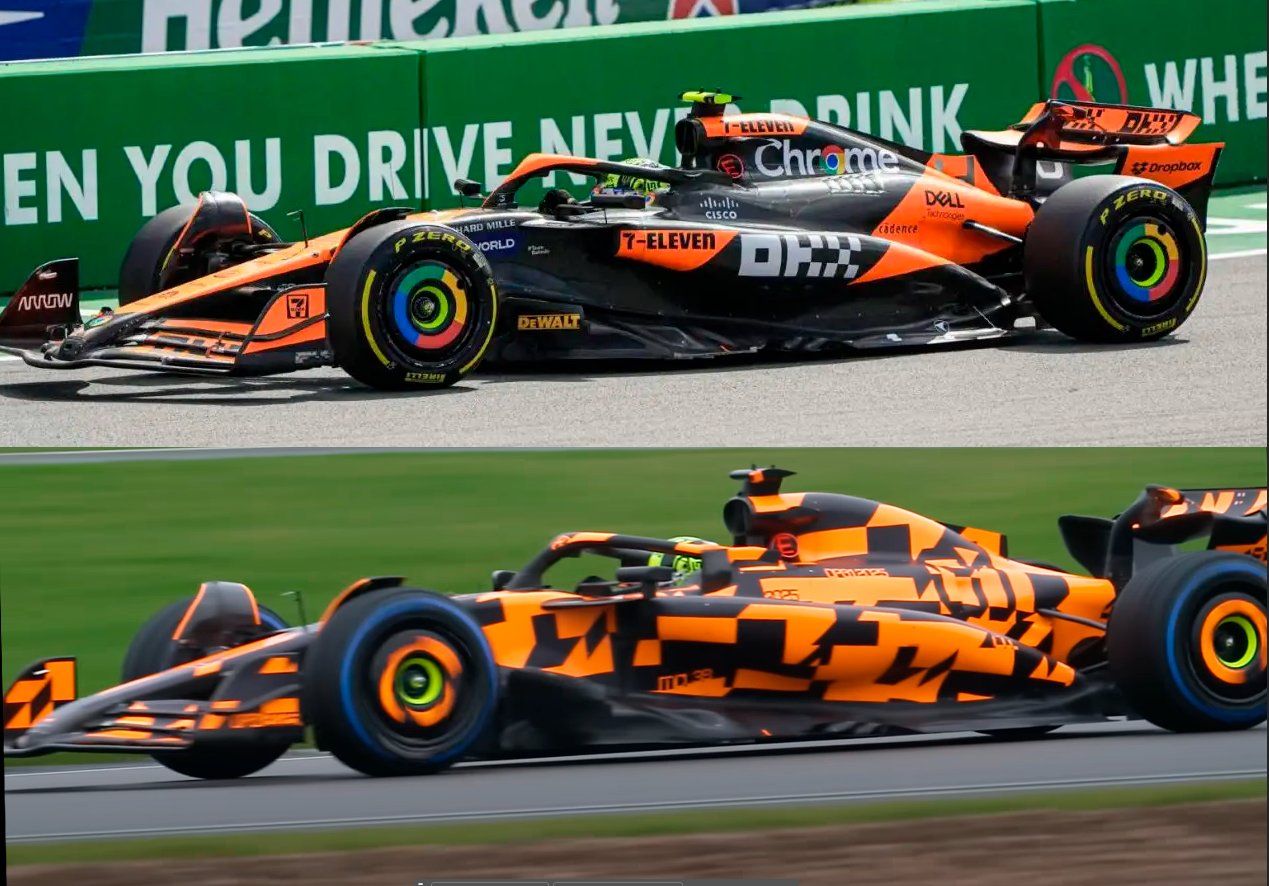
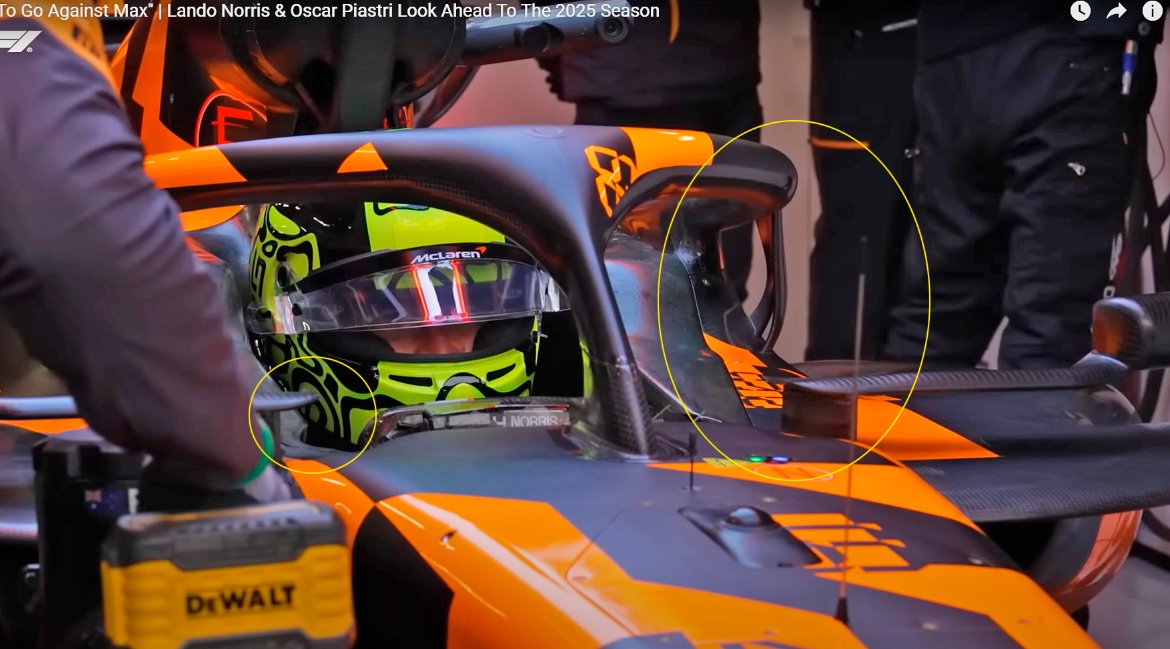

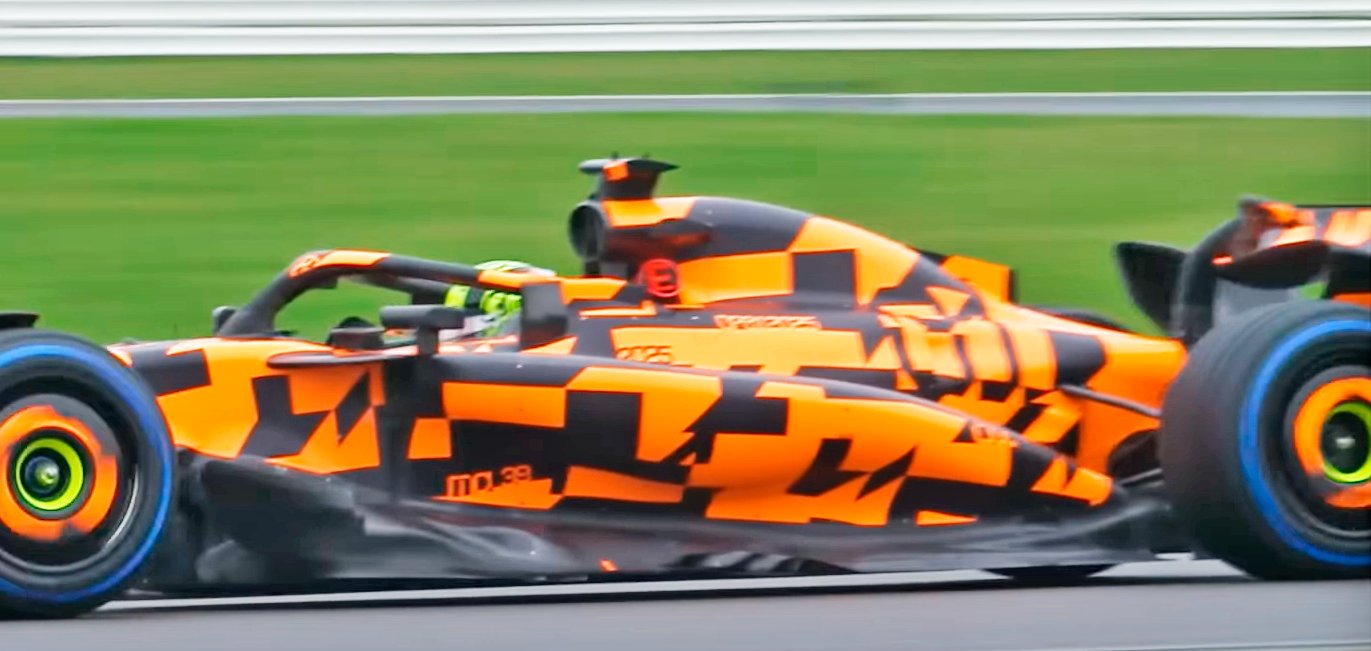

First of all excellent drawing-scheme, saw somewhere somthing like this.Vanja #66 wrote: ↑14 Feb 2025, 19:47As far as I know, over 100% anti dive leads to jacking, ie hopping under braking. It's more than badFDD wrote: ↑14 Feb 2025, 16:02
If I remember well that kind of geometry is anti anti-dive.
Different aero management/interaction that is for sure, AFAIK and based on many analyses made by You and some other guys on www.newsf1.it
However, this would be a very different geometry, as you can see on this illustration, not really what McLaren is doing I think
https://livetodai.com/uploads/default/o ... 1e6d0.jpeg
That's why I said it looks to me like "anti anti-dive" i.e. reducing the amount of anti dive.Andi76 wrote: ↑15 Feb 2025, 05:36And you are right. The percentage degree of anti-dive of the car does not depend on how low the attachment point of the rear leg of the upper wishbone is, as many journalists keep telling or "experts". One part of a wishbone does not work in Isolation andVanja #66 wrote: ↑14 Feb 2025, 19:47As far as I know, over 100% anti dive leads to jacking, ie hopping under braking. It's more than badFDD wrote: ↑14 Feb 2025, 16:02
If I remember well that kind of geometry is anti anti-dive.
Different aero management/interaction that is for sure, AFAIK and based on many analyses made by You and some other guys on www.newsf1.it
However, this would be a very different geometry, as you can see on this illustration, not really what McLaren is doing I think
https://livetodai.com/uploads/default/o ... 1e6d0.jpeg
it is simply wrong to think that you can simply lower the rear leg of the upper wishbone and get more anti-dive. The length and height of the side view swing arm, the wheelbase and the height of the center of gravity also play a role, as does the height of the lateral IC.
With this arrangement of the wishbones, the lateral instant center is very close to the ground level. If it was about anti-dive you would actually angle the WBs in the other direction and you could get a whole chunk more anti-dive with less restrictions whether structural or mechanical. There are some good explanations and illustrative examples in this forum that have already demonstrated several times that less a "Red Bull"-style inclined Suspension gives more anti-dive and your picture also illustrates it well. So what this is really is about is purely aerodynamics, not Anti-Dive.
Also, 100% anti-dive or more is not desirable even for a car with strong aerodynamics.If a car has 100% anti-dive then there will be no compression of the suspension at all due to braking forces. Nobody, at least in F1, wants that because it only brings disadvantages such as poor feedback to the driver, jacking and hooping under braking.
One thing McLaren could do here (but not with the rear leg of the upper WB in isolation!) would indeed be 100% anti-dive or more in static conditions. It is possible that they have developed a suspension that with the downforce generated by the aerodynamics, the geometry is then shifted to a new position where the anti-dive percentages drops below 100%, so they still have the maximum desired anti-geometry when it moves. Wouldn't be the first time and not unusual. But again - not with or because of the rear leg of the upper WB in isolation.
Most probably yes. In any case, the anti-dive value was very high with an instant center similar to that of the CoG (which was 22.5 to 23cm on the best cars at the time - F2004, R25), or even higher. With the known dimensions of the car, even without things like Castor etc, you knew that was probably something Newey and Oatley (who is still at McLaren since the 1980's) were doing here.Vanja #66 wrote: ↑15 Feb 2025, 12:06This would be a thing Marshal and Prodormu got from Newey, but didn't Newey do it at McLaren while there too? HmmmAndi76 wrote: ↑15 Feb 2025, 05:36One thing McLaren could do here (but not with the rear leg of the upper WB in isolation!) would indeed be 100% anti-dive or more in static conditions. It is possible that they have developed a suspension that with the downforce generated by the aerodynamics, the geometry is then shifted to a new position where the anti-dive percentages drops below 100%, so they still have the maximum desired anti-geometry when it moves. Wouldn't be the first time and not unusual. But again - not with or because of the rear leg of the upper WB in isolation.